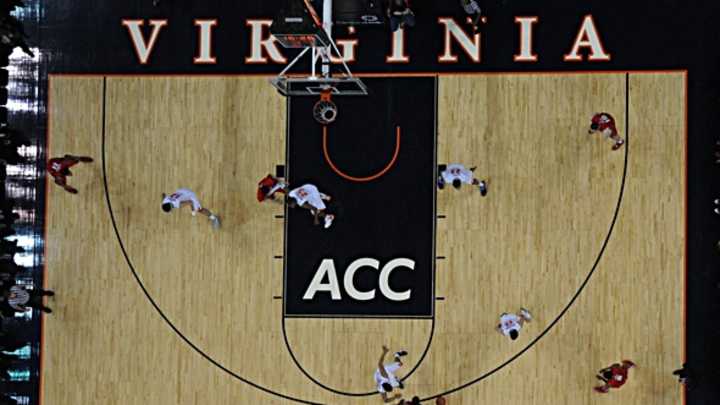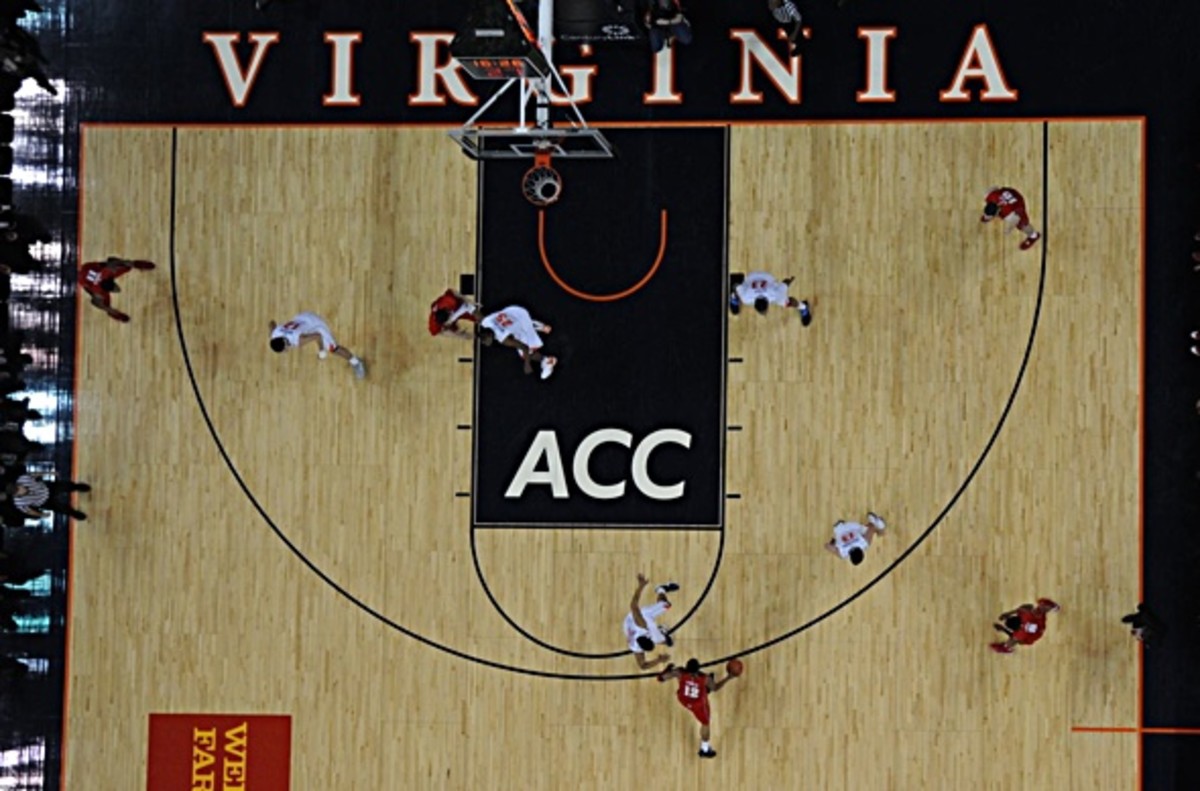An Upset-Friendly Defense


In March 1994, I was a 13-year-old "covering" his first NCAA tournament games in Ogden, Utah -- I put covering in quotes because I did not have a press credential; I sat in the Wisconsin section with my dad, who was a season-ticket holder; and I also obtained a young Jason Kidd's autograph while gathering material for a rambling story about my experience that was printed in my hometown paper, the Daily Jefferson County Union. That was where I witnessed my first upset, when a smaller home-state school from up north, No. 12-seeded Wisconsin-Green Bay, knocked off Kidd's Bears in the first round. My story did not contain the words "Pack-Line Defense," because as a 13-year-old I was incapable of identifying what Dick Bennett's UWGB team was using to hold Cal without a field goal for nearly 10 minutes of the first half, and because Bennett's hyper-containment defense was not branded as such until he put out an instructional DVD about it in 2005. That Wisconsin-Green Bay Cal game, though, would go down as the Pack-Line's original showcase. Gary Grzesk, the guy who helped hold Kidd to 12 points on 4-of-17 shooting, said that the Bears were so frustrated afterward that they skipped the handshake line.
In this week's SI, I wrote what I hope is a better Bennett-related story: A feature looking at the history of the Pack-Line, which Dick's son, Tony, a former guard for him at UWGB, is now running at Virginia. The 22-8 Cavaliers are barely hanging on: They've lost two players in the last week (their 7-foot center, Assane Sene, was suspended and already had a broken ankle, and freshman forward Malcolm Brogdon is done with a foot injury) and right-handed shooting guard Joe Harris is recovering from a broken left hand and a concussion. When UVA appears in the ACC tournament quarterfinals on Friday, it will only have six scholarship players available -- but it also has the nation's No. 1 defense in points allowed per possession, at 0.87.
The Pack-Line is not a revolutionary system -- Dick Bennett is so humble about it that he barely thinks it's a worthy topic -- but it provides a set of defensive rules that, when drilled incessantly in practice and stubbornly adhered to on the floor, have been used to pull off numerous upsets. Everything starts with all five guys sprinting back in transition, and then getting set inside the Pack-Line -- an imaginary, 16-foot arc that's like a shrunken 3-point line. (Virginia tapes it on its practice floor, and Dick Bennett had it painted on Wisconsin's practice court.)
The only person outside the pack is the man guarding the ball, who applies intense pressure, as the "head" of the defense. The other ball-side defenders are in early help position, shrinking potential driving gaps -- almost as if they're in a zone with man-to-man principles. Absolutely no post feeds from the top are allowed; post defenders prevent this by fronting their men at an angle. Opponents are allowed to freely rotate the ball around the perimeter, but they are not permitted to drive baseline, because that's the one spot where the Pack-Line has no help waiting. Virginia players talk as much about "guarding alleys" as they do guarding their men, and my favorite Todd Bozeman quote was that he told his Cal team that if they drove the lane, Green Bay players would be in there "posing for a team picture."
Dick Bennett said that he can tell a good Pack-Line team by just looking at their numbers -- they'll dominate the defensive glass and hold opponents to a low shooting percentage, but they're unlikely to create a ton of turnovers or score many points in transition. Pack-Line teams play slow -- Virginia ranks 339th in pace, at 60.3 possessions per game -- because it takes forever to break down their set defense.
By shortening games and helping negate athletic disadvantages, Pack-Lining has been an attractive system for underdogs. Dick moved on to Wisconsin and took them to the Final Four as a No. 8 seed in 2000; he and Tony helped pull Washington State off the mat later that decade; Sean Miller implemented it at Xavier, went to the Elite Eight, and still uses it at Arizona; Ben Jacobson used a hybrid version of it at Northern Iowa to upset Kansas in 2008; and Dino Gaudio was using it at Wake Forest when the Demon Deacons were briefly the nation's No. 1 team in 2009. Dick, who has since retired with his wife, Anne, to a remote Wisconsin lake house -- "our little hermitage," he calls it -- revealed all of the Pack-Line's secrets in an instructional DVD, and gave away all of his notes and tapes to coaches who asked him for advice, which happened quite often. But the Pack-Line is still highly effective, as a sound-and-stubborn blueprint for defensive success.
